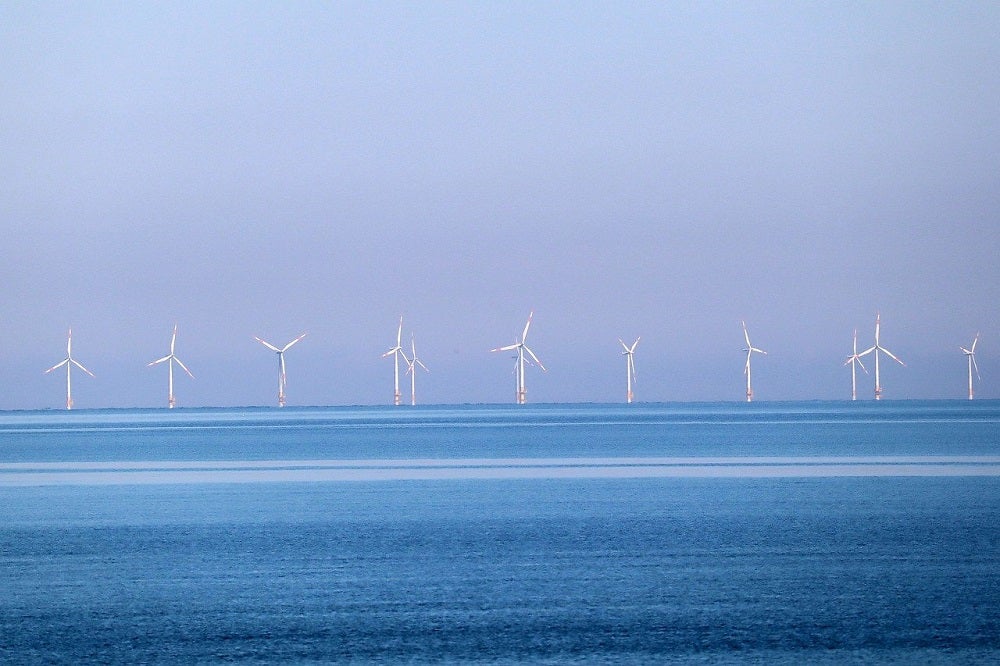
Global offshore wind investment hit a record $30bn in 2020, far surpassing the previous high of $22bn set two years earlier and highlighting the success of government-led mechanisms for de-risking projects.
Despite disruption caused by the pandemic, several large-scale assets reached final investment decision (FID) during the year, including the UK’s Dogger Bank and Seagreen windfarms, Taiwan’s Changfang and Xaido projects and France’s Saint Brieuc and Fecamp ventures.
In each country where FID was taken, some type of national route-to-market framework was used to support project development, according to an analysis from UK-based Renewables Consulting Group (RCG).
Total capacity financed in 2020, excluding China, hit almost 8.4 gigawatts (GW), according to the consultancy. Chinese additions were excluded from RCG’s overall figures due to a lack of publicly-available project data comparable to other regions.
Route-to-market framework agreements – like the UK’s contracts for difference auctions, or the feed-in-tariff models used in Taiwan and China – played a crucial role in advancing these additions to the global offshore wind fleet.
“The build out of commercial-scale offshore wind globally remains centred on markets with structured route-to-market mechanisms reducing investment risk,” said RCG associate Maxwell Clarke.
He added: “Across global markets, record capacity investments were not only seen in firm commitments to build projects, but also in capacity acquired through mergers and acquisitions.”
Offshore wind investment defies pandemic disruption in 2020
The wind sector as a whole gained significant momentum last year, in spite of a turbulent and disruptive landscape for energy markets due to the coronavirus pandemic.
In the US alone, new capacity additions – largely for onshore projects – grew 85% year-on-year, with particularly strong performance in the fourth quarter.
In terms of offshore wind, the UK has developed the world’s biggest market, with policymakers prioritising the technology as the backbone of their decarbonisation agenda and pledging to quadruple installed capacity over the next 10 years to 40GW.
The country’s contracts for difference auctions supported almost 3GW of the 3.7GW capacity that secured investment during 2020, including the Dogger Bank project which is poised to become the world’s biggest offshore wind venture once fully operational.
The Seagreen windfarm offshore Scotland secured commercial backing from French oil major Total, and will be the first commercial-scale offshore wind project in Europe to be majority funded without subsidy support.
In China, where President Xi Jinping recently committed to reaching net-zero emissions before 2060, RCG says offshore wind is undergoing a “massive development rush”, as project owners hurry to commission new deployments by the end of this year in order to qualify for feed-in-tariff rates linked to a 2019 tender.
Around 5GW of new capacity was brought online in China in 2020, RCG estimates, with more than 10GW at various stages of construction ahead of the tariff phase out. By the end of this year, the consultancy suggests China’s offshore wind market will surpass the UK as the world leader by operational capacity.
The analysis notes the success of route-to-market mechanisms in these two nations’ offshore industries can offer an example to other countries seeking to build out their own renewable fleets, by encouraging activity through de-risking projects for potential investors.
“While emerging markets have seen unprecedented growth in 2020 in terms of new project announcements and portfolio development, firm investment to take projects forward still requires a reduction in relative asset risk,” it states.
Clarke added: “With offshore wind and renewable energy touted by many as a global success story in the face of the Covid-19 pandemic, and a pillar of future energy generation and economic growth, emerging markets must formalise secure route-to-market mechanisms for real project investment to be realised.”
Governments in Greece, Sweden, Brazil, Romania and Bulgaria are all said to be openly exploring such frameworks for incentivising market activity.



